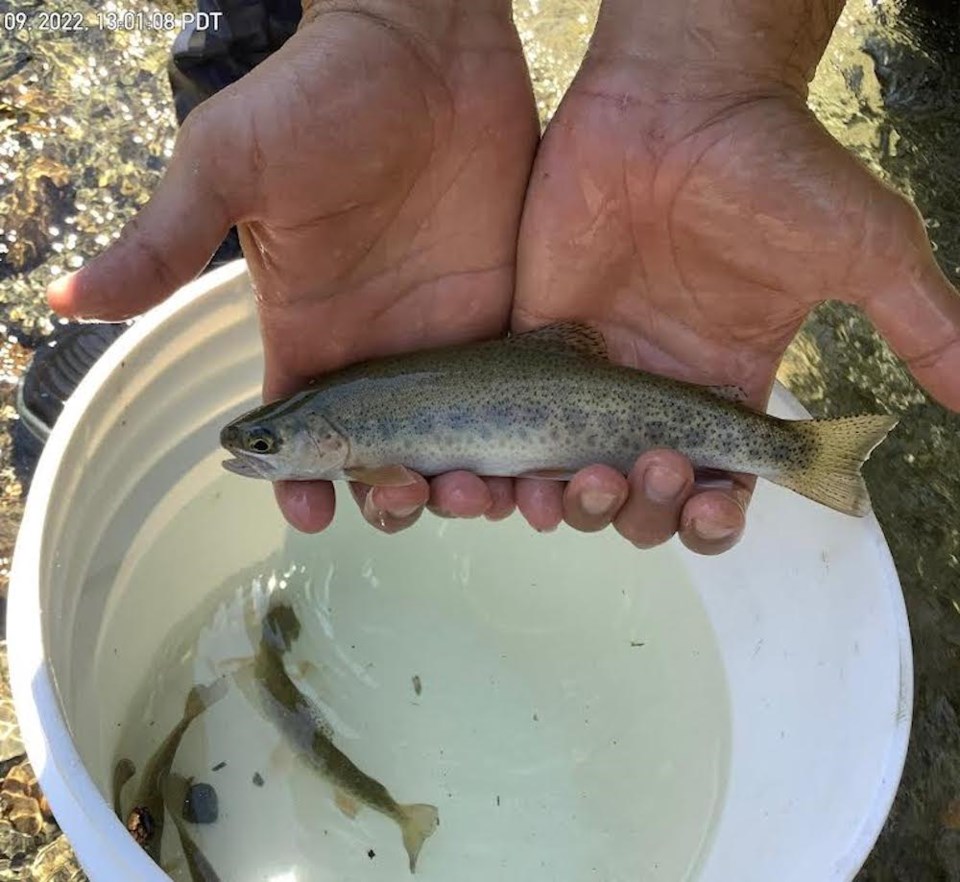My last article about Sunday Cider’s live music on Fridays spawned a whole mystery for this week. Reader Claire Finlayson, who was inspired to check out Area E’s local music scene, wrote to me: “Right at the intersection of the highway and the Sunday Cider driveway, there’s a ditch with clear running water and a little sort of pool right at the culvert that goes under the driveway.” She was pleasantly surprised to see water. “Then I saw two rather large fish… They were fat and healthy and at least four inches long. I’m curious as to how they got there – and I hope wherever that water is coming from, that it keeps on coming.”
I recalled playing with the small brown, spotted fish in our creek growing up at Henry and Reed Road and had also wondered how they got so far uphill. Questions like these fade away from your peripheral as you get busy with life. But my inner Nancy Drew was triggered, so I reached out to folks who could solve the riddle.
The president of the Sunshine Coast Streamkeepers Society, Shirley Samples, knew they were cutthroat trout. “They are a beautiful native fish to our local creeks,” Shirley said. “Their size is determined by the size of the creek or water body.” They get their name from two long, red markings on either side of their lower jaw.
Shirley recommended we talk to Jim Wilson, our Department of Fisheries and Oceans community advisor on the Sunshine Coast. “Yes, those fish are indeed resident cutthroat trout,” Jim confirmed. “Unlike their cousins, sea run cutthroat, these fish will spend their entire life living in your local stream for an average life span of three to five years.”
Jim filled in the picture of how the fish got so far up the side of Mount Elphinstone:
Firstly, our cutthroat have lived here for more than 70,000 years, when the sea level was much higher and Coastal B.C.’s topography was very different, allowing them access to high mountain pools of water and deep creeks.
Secondly, during our rainy winters (remember those days?) local streams fill up and interconnect with each other for a limited time. “These fish will often seek out new habitats if they are overcrowded or lacking resources.” Jim explained that during the atmospheric river of 2021, cutthroat trout were being found in higher ditch lines where they had not been seen prior to the storms.
Unfortunately, Jim can attest that our worsening droughts and new weather patterns are an enormous stress on fish in B.C. streams. Although creeks can appear dry, some have water just below the surface. Often resident cutthroat will crowd into the remaining pools of water to wait out drought season. Although it can be hard for us to watch, Jim says that interference can often do more harm than good. If you see any fish strandings in your local waterways, you can report to Jim directly at [email protected] and he can then assess the situation and see if a fish salvage is necessary.
Shirley of Streamkeepers appreciates interest in our local creeks, which are gifts not to be taken lightly. “If all of us work to observe and protect them, they will continue to be healthy ecosystems.”
Claire, who originally asked how the fish came to be hanging around ditches along Highway 101, said she is “impressed with the breadth of knowledge that’s out there” from people like Jim and Shirley who responded. As of the time of writing we just had a decent splash of rain we can all be grateful for, mountainous cutthroat included.





